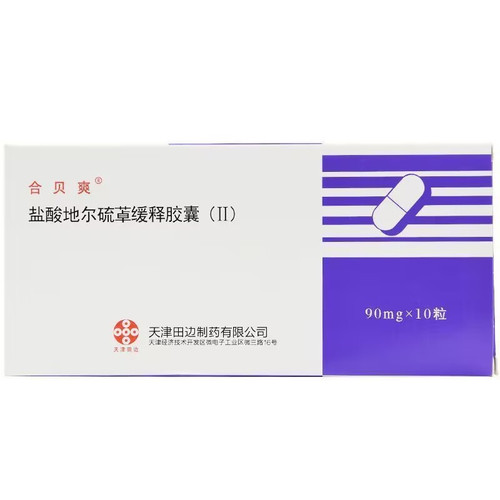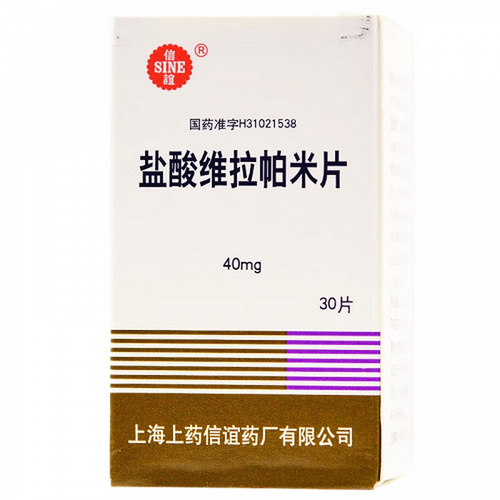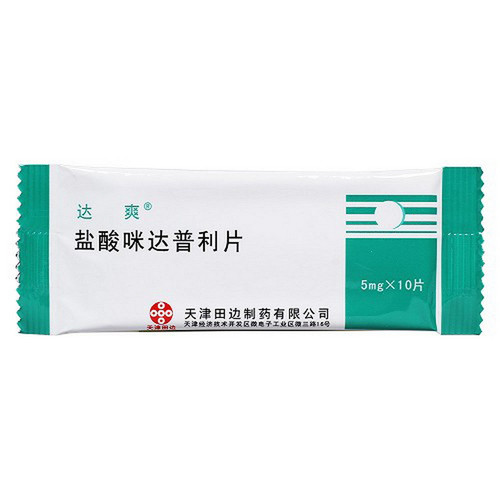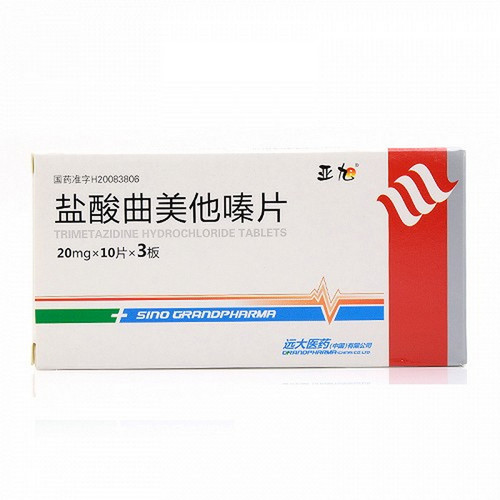Product Overview
[Drug Name]
Generic Name: Diltiazem Hydrochloride Tablets
Trade Name: Hexinshuang
English Name: Diltiazem Hydrochloride Tablets
Chinese Pinyin: Yan Suan Di Er Liu Huang Pian
[Ingredients]
The main ingredient is diltiazem hydrochloride. Chemical name: cis-(+)-5-[(2-dimethylamino)ethyl]-2-(4-methoxyphenyl)-3-acetoxy-2,3-dihydro-1,5-phenylpropylthiazepine-4(5H)-one hydrochloride.
[Properties]
This product is a white tablet.
[Indications]
1. Angina pectoris caused by coronary artery spasm and exertional angina. 2. Hypertension.
[Dosage and Administration]
Oral administration: Starting dose: 60-120 mg twice daily (2-4 tablets at a time, twice daily). The average dose range is 240-360 mg/day.
[Adverse Reactions]
1. Common adverse reactions: edema, headache, nausea, dizziness, rash, weakness.
2. Rare adverse reactions (<1%): Cardiovascular system: angina pectoris, arrhythmia, atrioventricular block, bradycardia, bundle branch block, congestive heart failure, electrocardiogram abnormalities, hypotension, palpitations, syncope, tachycardia, ventricular premature beats.
Nervous system: dreaminess, amnesia, depression, abnormal gait, hallucinations, insomnia, nervousness, paresthesias, personality changes, drowsiness, tremor.
Digestive system: anorexia, constipation, diarrhea, dysgeusia, dyspepsia, thirst, vomiting, weight gain, mild elevation of alkaline phosphatase, lactate dehydrogenase, aspartate aminotransferase, and alanine aminotransferase.
Skin: petechiae, photosensitivity, pruritus, urticaria.
[Contraindications]
1. Patients with sick sinus syndrome who do not have a pacemaker.
2. Patients with second- or third-degree atrioventricular block who do not have a pacemaker.
3. Systolic blood pressure below 12 kPa (90 mmHg).
4. Patients allergic to this product.
5. Patients with acute myocardial infarction or pulmonary congestion.
[Precautions]
1. This product may prolong the refractory period of the atrioventricular node, but does not significantly prolong sinus node recovery time, except in patients with sick sinus syndrome. In rare cases, this effect may abnormally slow the heart rate (especially in patients with sick sinus syndrome) or cause second- or third-degree atrioventricular block. Combination use of this product with beta-blockers or digitalis may result in synergistic effects on cardiac conduction. There is a report of a patient with variant angina who experienced cardiac arrest for 2-5 seconds after oral administration of 60 mg of this product.
2. This product has a negative inotropic effect. Experience with its use alone or in combination with beta-blockers in patients with impaired ventricular function is limited; therefore, caution should be exercised in these patients. 3. This product may occasionally cause symptomatic hypotension.
4. This product may rarely cause acute liver damage, manifested by significant elevations in alkaline phosphatase, lactate dehydrogenase, aspartate aminotransferase, and alanine aminotransferase, as well as other signs of acute liver damage. Recovery is possible with discontinuation of the drug.
5. This product is metabolized in the liver and excreted by the kidneys and bile. Long-term use requires regular monitoring of liver and kidney function. Caution should be exercised in patients with impaired liver and kidney function.
6. Reactions are usually transient and may resolve with continued use. There have been rare reports of skin reactions that may progress to erythema multiforme and/or exfoliative dermatitis. If the skin reaction persists, the drug should be discontinued.
7. Due to the potential for synergistic effects with other drugs, caution should be exercised when using concomitantly with drugs that affect cardiac contractility and/or conduction, and the dosage should be carefully adjusted.
8. This product is biotransformed in vivo via cytochrome P450 oxidase. Coadministration with other drugs that undergo biotransformation via the same pathway may lead to competitive inhibition of metabolism. Therefore, when starting or stopping concurrent use of this drug, the dosages of drugs involved in the same metabolic pathway, particularly those with a low therapeutic index or in patients with impaired liver or renal function, must be adjusted to maintain appropriate blood drug concentrations.
[Use in Special Populations]
Precautions for Pediatric Use:
The safety and efficacy of this drug in children have not been established.
Precautions for Pregnancy and Lactation:
Controlled trial data are lacking in pregnant women, so the use of this drug in pregnant women should be carefully weighed against the risks and benefits. This drug is excreted in breast milk, and concentrations approach the blood drug level. If this drug is necessary for a breastfeeding woman, the infant's feeding regimen should be modified.
Precautions for Elderly Use:
No clinical data on its use in the elderly have been found, but it is recommended that elderly patients start with half the usual dose for normal individuals.
[Drug Interactions]
1. Beta-Blockers: Studies have shown that the combined use of diltiazem hydrochloride and beta-blockers is well tolerated, but data are insufficient in patients with left ventricular dysfunction and conduction dysfunction. This medication can increase the bioavailability of propranolol by nearly 50%, so the propranolol dosage must be adjusted when co-administering the two drugs.
2. Cimetidine: Due to its inhibition of cytochrome P450 oxidase, it affects the first-pass metabolism of this medication and can significantly increase the peak plasma concentration and area under the concentration-time curve of this medication. Ranitidine only slightly increases the plasma concentration of this medication.
3. Digoxin: Some reports suggest this medication may increase digoxin plasma concentrations by 20%, while others report no effect. Although these results are conflicting, digoxin plasma concentrations should be monitored when initiating, adjusting, and discontinuing treatment with this medication to avoid digoxin overdose or underdose. 4. Anesthetics: They inhibit myocardial contraction, conduction, and automaticity, and have vasodilatory effects, potentially synergizing with this medication. Therefore, careful dosage adjustment is necessary when co-administering these two drugs.
[Pharmacological Action]
This medication is a calcium channel blocker. Its action is related to the inhibition of calcium influx during depolarization of myocardial and vascular smooth muscle. This product effectively dilates epicardial and subendocardial coronary arteries, relieving spontaneous angina or angina caused by ergonovine-induced coronary artery spasm. By slowing heart rate and lowering blood pressure, it reduces myocardial oxygen demand, increases exercise tolerance, and relieves exertional angina. This product relaxes vascular smooth muscle, decreases peripheral vascular resistance, and lowers blood pressure. The extent of its blood pressure reduction depends on the degree of hypertension; in normotensive individuals, it only causes a slight decrease in blood pressure. This product has a negative inotropic effect and may slow conduction in the sinoatrial and atrioventricular nodes.
[Storage]
Store in a dark, sealed container.
[Specifications]
30mg x 50 tablets
[Packaging]
Box
[Expiry Period]
36 months
[Approval Number]
National Medicine Standard H12020126
[Manufacturer]
Company Name: Tianjin Tanabe Pharmaceutical Co., Ltd.







